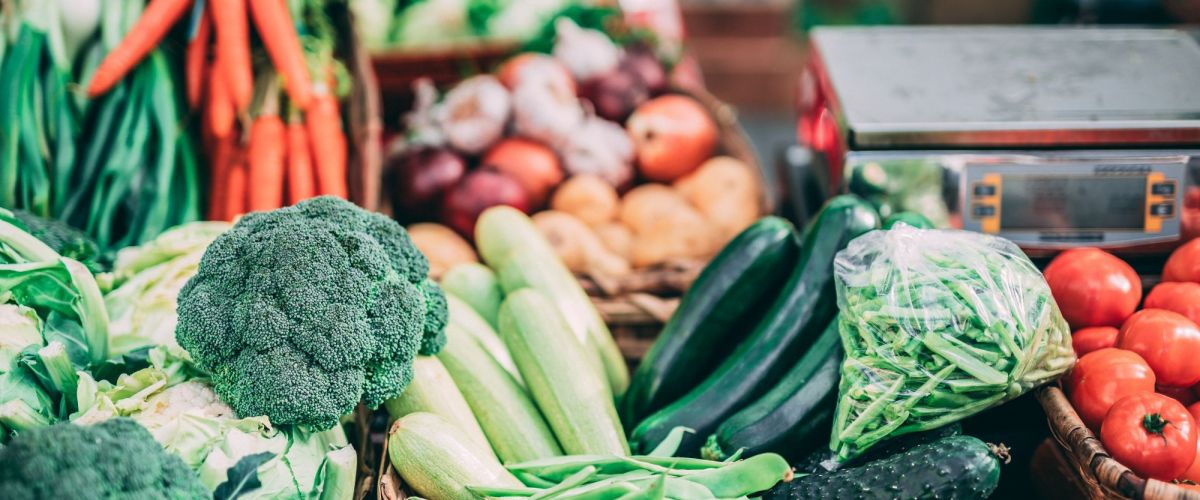Fibre
August 25, 2020

Dietary fibre is a non-digestible carbohydrate. Fibre is split into two categories based whether it dissolves in water or not:
- Soluble fibre: Dissolves in water and can be metabolised by the “good” bacteria in the gut.
- Insoluble fibre: Doesn’t dissolve in water.
There are many different types of fibre, some of which have important health benefits, while others are not as useful.
Roles of fibre:
1. Feeds “good” gut bacteria
The body is full of bacteria that live on the skin, in your mouth and nose and in your gut. The gut is where the majority of the bacteria live and there are approximately 500 different bacteria living in your large intestine. These bacteria need energy to survive. However, the majority of the bacteria live in your large intestine, so most of the food you eat is absorbed into the blood stream before getting to them meaning that there isn’t much energy around for the bacteria. Fibre however, isn’t digested like other nutrients as we don’t have the enzymes necessary to digest them which means that they can make their way to the large intestine relatively unchanged. These bacteria living in the large intestine do have the enzymes needed to digest these fibres so can use it as food to survive and grow.
The good bacteria in the gut produce nutrients for the body such as short-chain fatty acids, which can feed the cells in the colon reducing gut inflammation, helping with digestive disorders such as irritable bowel syndrome, Crohn’s and ulcerative colitis, helping preventing weight gain, diabetes and cancer.
2. Reduces cholesterol
Studies have shown that eating soluble fibre can help reduce cholesterol levels. In one study, taking psyllium (which is high in fibre) for 8 weeks was shown to reduce serum total cholesterol levels by 14.8%, low-density lipoprotein (LDL) cholesterol by 20.2%, and the ratio of LDL cholesterol to high-density lipoprotein cholesterol by 14.8% compared to baseline values. This may be because fibre effects the absorption of cholesterol and fat, an increase in bile secretion which may divert hepatic cholesterol for bile acid production, and/or the short-chain fatty acids which are produced as a by-product of fibre inhibiting hepatic cholesterol synthesis. Fibre may also decrease HbA1c and fasting blood glucose.
3. Weight-loss
There are a few different ways that fibre can help with weight-loss:
a. Certain types of fibre can help you lose weight by increasing satiety. Fibre soaks up water in the intestine which slows the absorption of nutrients and increases the feeling of being full, helping reduce calorie intake.
b. Also, if you eat a diet high in ultra-refined, quick-absorbing foods you will experience altered hunger signalling and an altered intestinal hormonal profile, and therefore a higher food intake and an increase in the number of meals eaten compared to eating a higher fibre diet.
c. High fibre foods also often have a lower glycemic index than refined carbs which reduces the spike in blood sugar that occurs after eating high carbohydrate foods.
How much fibre do we need?
The NZ Nutrition Foundation recommends that women get 25g of fibre per day and men get 30g. However, the majority of New Zealander’s don’t get enough fibre in their diets with many of us eating less than half of the recommended amount.
What foods are high in fibre?
- Fibrous vegetables such as carrots, beetroot, broccoli, collard greens, Swiss chard and artichokes are good sources of fibre. For example a cup broccoli contains ~5g of fibre.
- Fruits – eat the skin as well. A medium apple contains ~4.5g of fibre.
- Whole-food carbohydrates – stay away from processed and refined sources of carbs that have been stripped of their fibre. Good sources are quinoa, brown rice or oats. One cup of quinoa contains ~5g of fibre.
- Legumes – One cup of lentils contains 15.5g of fibre
- Psyllium husk – One tablespoon (5g) of psyllium contains ~4g of fibre
- Nuts and seeds – 28g of chia seeds contains ~10g of fibre.
Latest Blog Articles

Gaining Weight for Health
Most information around nutrition focusses on weight-loss but some people need to gain weight, sometimes very quickly, for various medical reasons, such as leading into cancer treatments or recovering from eating disorders. We’ve had a few questions around this lately, especially in relation to a whole-food low-carb diet so we thought we’d look at a few things you can do to help gain weight while on this type of diet.
Read More
Food Pairings
We all have those foods that we love eating together: peanut butter and banana, strawberries and chocolate, tomato and basil, but did you know that certain foods are best paired together to enhance the nutritional value of your food? How you combine your foods can have a significant impact on the benefit you get from them: increasing the absorption of important nutrients and boosting the effectiveness of antioxidants. Here are just some interesting food groupings that can be easily added to your diet.
Read More
Fat Soluble Vitamins
Fat soluble vitamins are vitamins that dissolve in fats and oils. They are absorbed into your blood better when they are eaten with a fat source and can be stored in the liver and fatty tissues. Unlike water soluble vitamins, fat soluble vitamins are not lost when foods that contain them are cooked.
There are 4 fat soluble vitamins – vitamin A, D, E and K.
